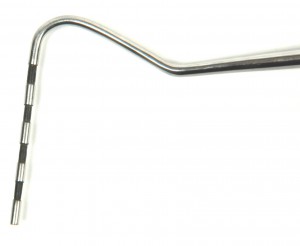One of the most under appreciated parts of dentistry is treatment of the gums and surrounding tissue that holds the teeth. This areas in dentistry are called the "periodontium," and fall under the category of periodontics. But simply put this is the area that keeps your teeth tight in your mouth.

Most of gum disease can be understood with the above picture. On the left side we have a standard tooth with healthy gums. The gums are pretty attached and the brown mountain material next to the tooth is your jawbone. What dentists look for is the height of that bone on Xrays.
Now in the mouth dentists use this instrument call the periodontal probe:

Depending on who is using it, it can feel like someone is checking your gums or stabbing your gums multiple times. Often times the dentist will call out numbers while doing so. However gentle, he is trying to measure depth at which that "periodontal pocket" you see above is. The deeper it is, the more concerned the dentist is because 1) It shows how much bone has been eroded away and 2) It is extra hard to clean to deeper it gets for you and the dentist. Normal depths are 2 mm and 3 mm. 4 mm and above shows disease with anything 6 and above being very alarming.
So the big question is: WHY DO YOU CARE? Here are the reasons that you should care:
1) When severe enough, the bone will erode away to the point where your teeth will get loose, abscess and fall out. This is how people end up needing dentures even if they don't have cavities.
2. Periodontal disease has been linked to a lot of other very common and severe diseases. These include:
Heart Disease
Stroke
Diabetes
Premature and/or Low birth-weight babies
Cancer
So yeah that pretty bad stuff that is associated with something as trivial as gum disease. The reason for this is because gum disease is a disease that increases the overall inflammation in your body. Inflammation seems to be the big link for all of these diseases including cancer. We'll dive into treatment next post!